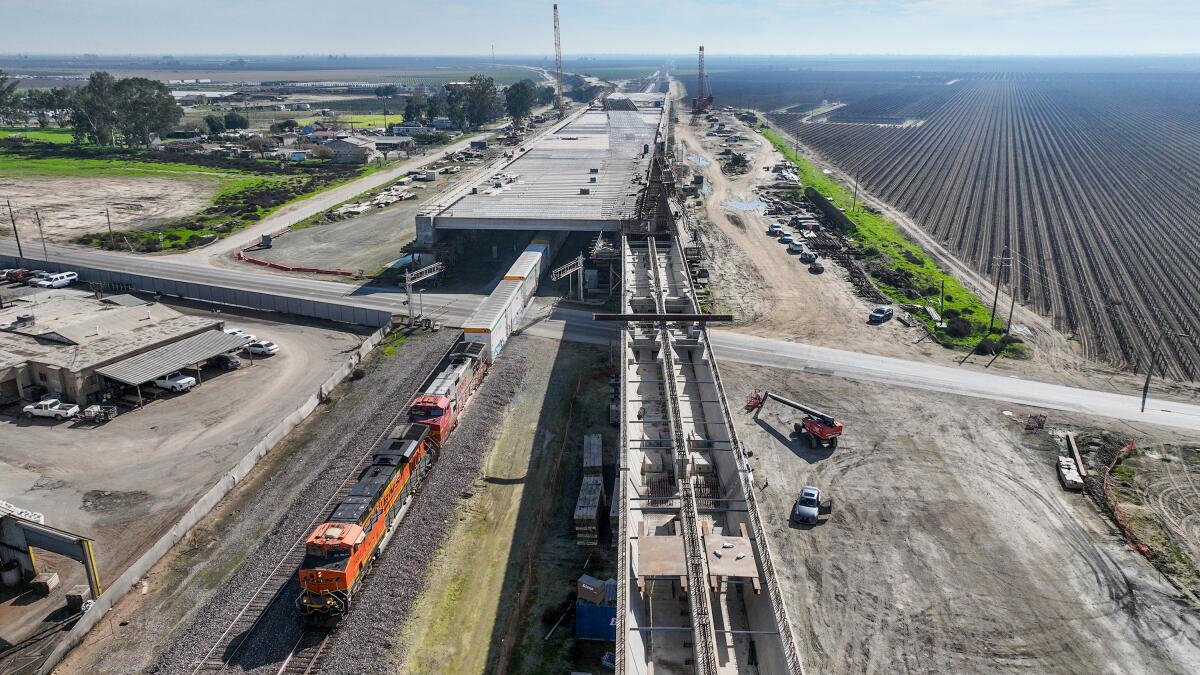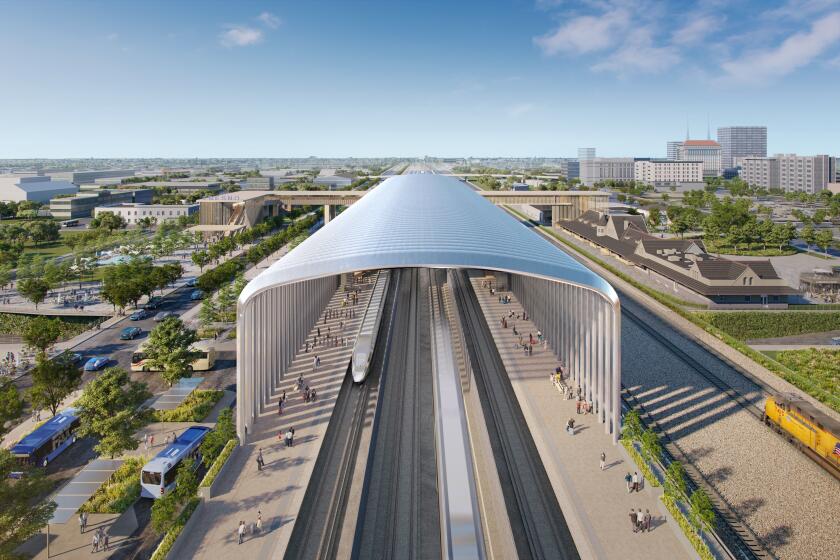High-speed rail board supports new recommendations for L.A.-to-Anaheim segment

- Share via
The California High Speed Rail Authority’s board of directors supported new recommendations for a planned rail segment between Los Angeles and Anaheim, clearing it for a critical environmental review after the initial proposal received pushback from the community.
The final environmental report is expected to take more than a year to finish, outgoing Chief Executive Brian Kelly said at Thursday’s board meeting, calling it the “final requirement we have on environmental documentation for phase one of the high-speed rail system” in compliance with federal grant obligations.
The first phase to connect the state includes a 494-mile rail line from Anaheim to San Francisco. Construction is currently underway on a 119-mile stretch in the Central Valley.
Recommendations for the 33-mile rail segment from Los Angeles to Anaheim includes four mainline tracks that would be used by the bullet train, other passenger rail and BNSF freight trains. It eliminates the initial plan to develop a freight facility for BNSF, which owns the railroad stretch from Los Angeles to Anaheim, in the city of Colton that would have housed trains not in operation. The idea received pushback from the Colton community and from BNSF.
California’s high-speed rail is a decade off-schedule and is expected to cost $100 billion more than initially planned.
The recommendations include a train maintenance facility at either E. 15th Street in Los Angeles or E. 26th Street in Vernon, at-grade crossings in Anaheim where the highway and high-speed rail line would be level, and no intermediate stations. The proposed line would include underground, above-ground and surface-level portions.
The budget for these new recommendations would be about $6.9 billion instead of the previous estimate of more than $9 billion. The drop in cost is due in part to the loss of the Colton facility.
The authority said it’s working to extend construction from Merced south to Bakersfield and plans to showcase mockups of the train at California’s State Fair in Sacramento in July. While progress inches forward, the board continued to stress the need for a clear vision amid the many challenges.
“I want to make sure that we don’t look at this as another commuter rail, and that we think about the bigger picture as we go along,” board member Lynn Schenk said. “We have to look to the future to make sure that this is going to be high-speed rail: San Diego, L.A., Central Valley to the Bay Area.”
Board Member Martha Escutia asked for a deeper understanding of how contracts are procured for different construction and production projects.
“I see the schedule of all these multimillion-dollar ... contracts and I feel very reluctant to vote on this because I just want to make sure that the process is fair,” she said, stressing the need for impartiality.
Kelly said that the “procurement process we run is open, fair, transparent.”
“If any board member wants to review the scoring, we can make that available to the board members to do so,” he said.
More to Read
Sign up for Essential California
The most important California stories and recommendations in your inbox every morning.
You may occasionally receive promotional content from the Los Angeles Times.












